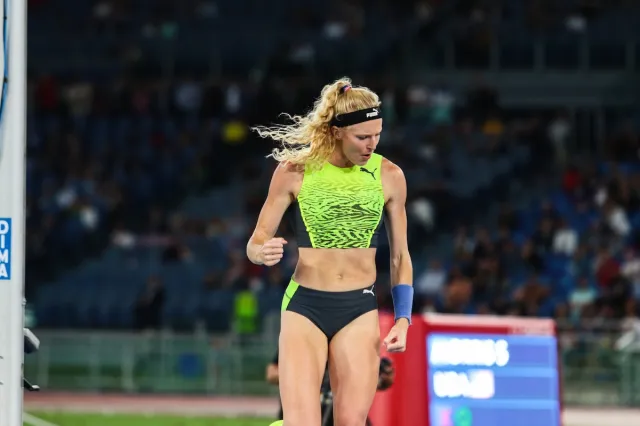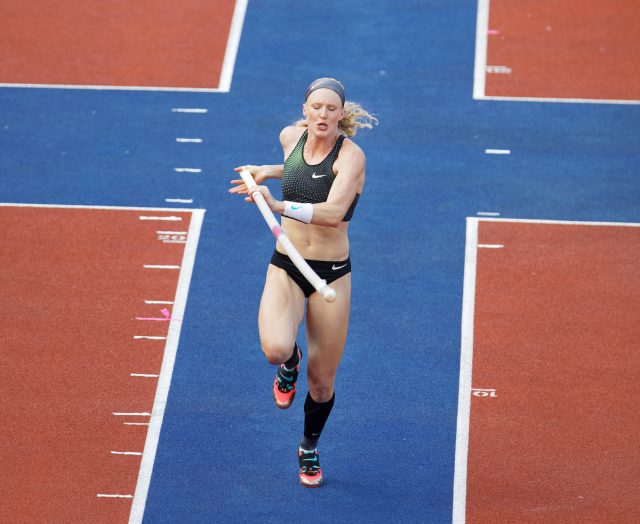American pole vault champion Sandi Morris enjoyed a beautiful trip to Rieti, Italy over the summer—but even then she was in training mode. Morris, 31, shared pictures of herself on the trip, posing in ice cold pond water while wearing a blue two-piece swimsuit. “Nature’s #icebath in the hills of Italy ,” she captioned the post. Morris is an Olympic silver medalist, which comes as no surprise to anyone who pays attention to her lifestyle and training regimen, both when she is and isn’t competing on the world stage. Here are 5 ways the athlete prioritizes her health and fitness.
Morris constantly posts videos and reels of her weight lifting and strength training workouts. Like many Olympic athletes, lifting weights helps make Morris a better competitor. “There is no doubt that an appropriate weight-training program would improve efficiency in pretty much any athlete,” Gary R. Hunter, professor of exercise physiology at the University of Alabama at Birmingham, told the New York Times.

When the pandemic forced gyms and training facilities to shut down in 2020, Morris literally took matters into her own hands by building her own pole vault pit with the help of her parents. “Mostly my training has consisted of building the pole vault pit with my dad,” she said. “We’ve been out there working on it every day for the last three weeks. Now we’re completely done… It’s been a challenge but I never have time off so I’m taking it for what it is. I can’t lose complete fitness because I will be expected to come back and compete whenever that happens. So I’m keeping my general fitness up, keeping my spirits up and I’m just going to have some fun. I’m not murdering myself in workouts because I can’t plan any type of cycle, so just taking it one day at a time.”

Morris has learned to focus on the nutritional value of food over restricting calories. “The best diet advice I have for anyone of any age and athletic ability is: Look at every meal with the question ‘what nutrients does this food offer my body?'” she says. “Culturally, we focus TOO much on restricting calories and NOT ENOUGH on naturally consuming proper vitamins/minerals, etc.”
Morris enjoys a protein-packed diet chock-full of vegetables, fresh fruit, and healthy fats. “A robust body of research has revealed the wide-ranging benefits of including healthy fats in the diet,” say Elizabeth Ko, MD, and Eve Glazier, MD. “These include lowering the risk of developing heart disease, improving blood cholesterol levels, helping with blood sugar control and reducing inflammation. Healthful fats have a beneficial effect on blood pressure, and they have been shown to support gut health.”
One look at Morris’ social media food posts will show she eats carbohydrates—a LOT of carbohydrates. The athlete enjoys whole foods such as potatoes and vegetables and won’t shy away from egg noodles and other starches. “Depending upon the training routine, athletes should consume anywhere from 3-12 grams of carbohydrates per kilogram of bodyweight throughout the day,” say the experts at the USADA. “This percentage is only a guideline for estimating carbohydrate needs. Depending upon the length and type of training sessions, an athlete’s carbohydrate intake should adjust, with longer times and more intense trainings reflecting the higher number of grams needed.”
Credit: Source link




